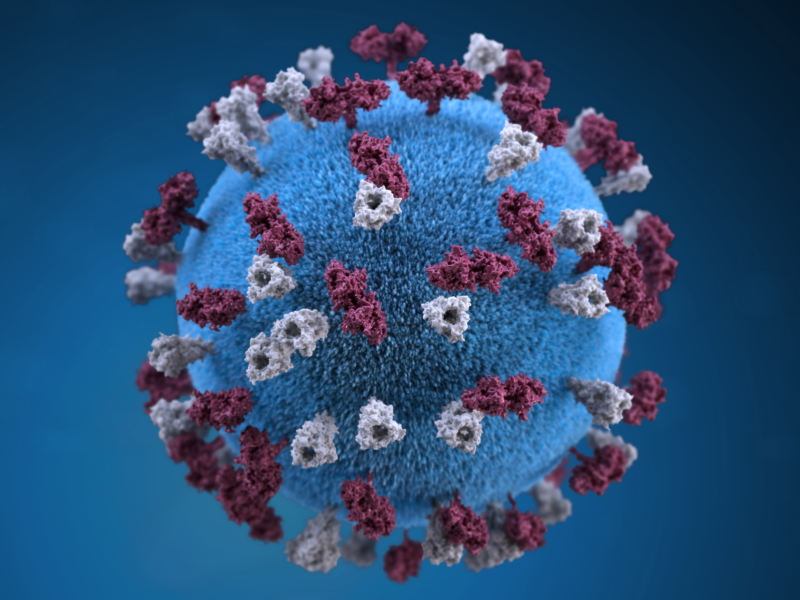One of the many articles about Dr. Ron Fouchier’s mutated strain of H5N1 is titled “The Deadliest Virus” and printed with a menacing illustration of a gaunt bio-safety mask opening to release three red-eyed crows. This article is just part of the miasmic debate embroiling Dr. Fouchier’s new version of the avian flu. The problem with his virus is its highly pathogenic nature, the agility and speed with which it moves from host to host. It works too well. So well, in fact, that the National Science Advisory Board for Biosecurity (NSABB) convened on March 29th for the final time to discuss how Fouchier’s research should interface with the public, and most importantly, potential bioterrorists. After initially halting publication months ago, they agreed to let part of it into the public sphere. The NSABB deemed a similar article by Dr. Kawoaka to be admissible, but decided that parts of Fouchier’s manuscript, which he updated during the initial publication freeze, were not. Fouchier’s iteration of H5N1, which mutated in November this year when passed between ferrets in his Rotterdam laboratory, quickly became a flashpoint in the scientific community. Fouchier successfully turned a virus that usually binds to humans deep in their lungs, where it is difficult to cough up, into one that thrives in the upper respiratory tract and can be easily spread on droplets when people cough, sneeze, or spit. The NSABB decision, after several delegations and much debate in the scientific, blogo-, and political spheres, represents an indecisive compromise on censorship.
When Fouchier completed his research, two manuscripts, one headed by Dr. Yoshihiro Kawaoka at the University of Wisconsin and the other by Dr. Fouchier and the Erasmus group, were scheduled to run in the journals Nature and Science. However, the Department of Health and Human Services directed the NSABB to pause the publications. Flu virologists and the National Institute of Health (NIH), who funded Fouchier’s research, agreed to a 60-day moratorium to decide whether or not it would be unsafe to publish the new data; however, they maintained that the new information was valuable and could pave the road to conquering the natural H5N1 virus. For the public, the debate grew past whether the information was safe to what value existed, if any, in the man-made virus. Many scientists rose to defend the necessity of Fouchier’s research. Meanwhile, almost forgotten in the penumbras of the debate, the articles were sidelined until the NSABB recently reversed its position in March. Then, only two weeks later, decided that parts of Fouchier’s manuscript must once again be subject to analysis. If nothing else, the indecision of the NSABB underlines the government’s timidity to make the information available to bioterrorists hidden in the general population, especially in light of the rigorous scientific debate.
This is the first time the NSABB issued such a direct and invasive request on “dual-use” information, that is to say, data that could be used to help or to hurt the public. With the virus, it all depends on who is using it. A recent piece in the New Yorker cited scientists who constructed a viable polio virus from only mail-order genetic sequences to support the argument that anyone with the Internet could be a threat. On the other hand, Michael T. Osterholm, director of the Center for Infectious Disease Research and Policy at the University of Minnesota Health Center told the New Yorker he was more concerned about some “incredibly smart, smug kid at Harvard, or a lone crazy employee with access to these sequences” than a bioterrorist. However, he too does not believe the specifics of how to mutate the virus should reach everyone. The debate quickly expanded beyond the laboratories and reached the political and public level. Even Jim Sensenbrenner of the US House of Representatives expressed the speculations of the general population as to why a man-made H5N1 virus was beneficial at all.
The value in Fouchier’s research seemed to draw validation from years of outcry about the burgeoning H5N1 virus that, through wide media attention, became a specter in the mind of scientists and the public alike. In 2009, Laurie Garrett, author of The Coming Plague, described H5N1 on the Colbert Report as “about 850 times as bad” as swine flu. This came only two years after the Gates Foundation proposed the idea of a pre-pandemic avian flu vaccine at the Pacific Summit. Shouldn’t Fouchier’s virus provide insight into mammal-to-mammal transmission; or a strain that may naturally infect humans; or, on the most hope-filled and carefree spring day, even a vaccine? To these three options Laurie Garrett says no. She states in her blog, “all three are groundless, based on currently public information, or so weak as to crumble when weighed against risks of environmental release of the microbes.” For many, the natural virus seems too genetically fickle and variable to provide a viable vaccine. In this light, Fouchier’s H5N1 seems little more than a caged monster in its sterile laboratory than a beacon of scientific utility.
The 60-day moratorium on Fouchier’s studies opened the floor for scientists, politicians, and the public to theorize and advocate their views. Fouchier’s H5N1 virus received laboratory-based praise and unwavering criticism. However, the NSABB entered the arena with a focus on the safety of the public in light of modern bioterrorism. Specifically, their decision underscored whether it is better to allow dual-use technology into the public sphere or to censor it based on the atom-sized proportion of men and women who could use the virus for evil. Although many argue the chances of the virus escaping a lab, or evolving naturally are larger points of concern, the NSABB delegation speaks to changing perceptions of globalized information and security in the wake of the War on Terror. The threats they perceive illustrate that, whether it is unnecessary data or a scientific accomplishment, Fouchier’s research can be measured physically by nanometers, but also global implications.
[Editor’s note: Both the United States and the Netherlands governments show great hesitation with regard to publishing Fouchier’s material. The Netherlands abides by EU legislation, which requires an export permit for dual use research. Fouchier, however, refuses to submit a permit, stating that the EU law exempts “basic scientific research” that is “not primarily directed towards a specific practical aim or objective.” Further, he points out, Science can accept any paper submitted to them under their First Amendment rights. As reported by Jim Wappes and Lisa Schnirring at CIDRAP, Fouchier could face up to 6 years in prison and $102,000 in fines if he does not seek an export license. Dutch authorities, including the Erasmus group, journal editors, representatives from the European Commission and the World Health Organization, will met on April 23 to determine the risks and harms of publishing Fouchier’s research and expects an application for an export permit at this time.]

